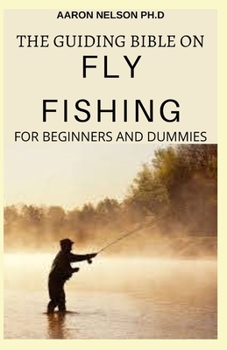The Guiding Bible on Fly Fishing for Beginners and Dummies: A Complete Guide on the Safe Essentials of Fly Fishing
Fly fishing is an angling method that uses a light-weight lure called an artificial fly to catch fish. The fly is cast using a fly rod, reel, and specialized weighted line. The light weight requires casting techniques significantly different from other forms of casting. The flies may resemble natural invertebrates, baitfish, or other food organisms.Fly fishing can be done in fresh or salt water. North Americans usually distinguish freshwater fishing between cold-water species (trout, salmon, and steelhead) and warm-water species, notably bass. In Britain, where natural water temperatures vary less, the distinction is between game fishing for trout and salmon versus coarse fishing for other species. Techniques for fly fishing differ with habitat (lakes and ponds, small streams, large rivers, bays and estuaries, and open ocean.)In fly fishing, fish are caught by using artificial flies that are cast with a fly rod and a fly line. The fly line (today, almost always coated with plastic) is heavy enough to send the fly to the target. The main difference between fly fishing and spin or bait fishing is that in fly fishing the weight of the line carries the hook through the air, whereas in spin and bait fishing the weight of the lure or sinker at the end of the monofilament or braided line gives casting distance. Artificial flies are of several types; some imitating an insect (either flying or swimming), others a bait fish or crustacean, others attractors are known to attract fish although they look like nothing in nature. Flies can be made either to float or sink, and range in size from a few millimeters to 30 cm long; most are between 1 and 5 cm.Artificial flies are made by fastening hair, fur, feathers, or other materials, both natural and synthetic, onto a hook. The first flies were tied with natural materials, but synthetic materials are now popular and prevalent. Flies are tied in sizes, colors and patterns to match local terrestrial and aquatic insects, baitfish, or other prey attractive to the target fish species.
Format:Paperback
Language:English
ISBN:B08NVL65B6
ISBN13:9798567275238
Release Date:January 1
Publisher:Independently Published
Length:50 Pages
Weight:0.15 lbs.
Dimensions:0.1" x 5.5" x 8.5"
Customer Reviews
0 rating





